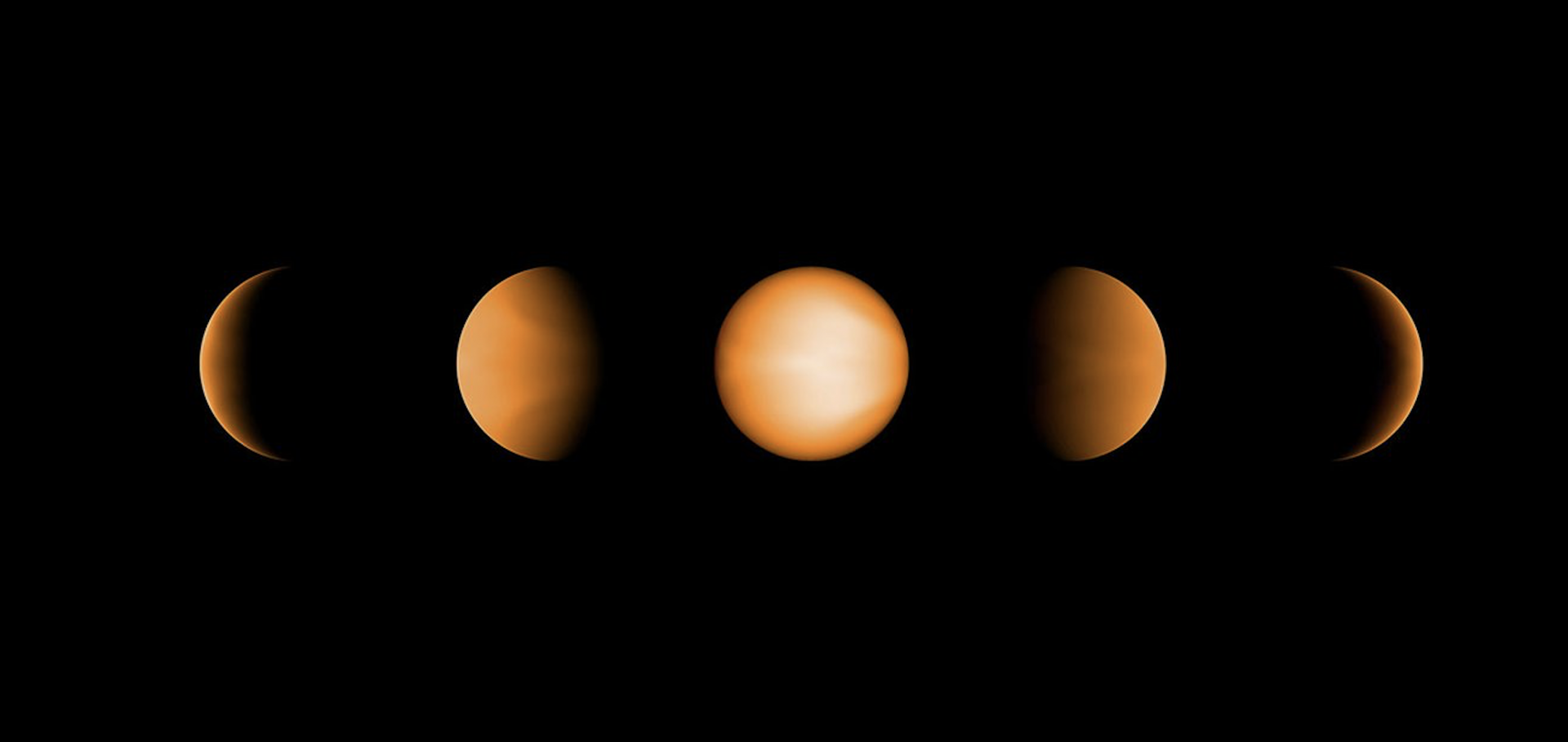From thermal dissociation to condensation in the atmospheres of ultra hot Jupiters: WASP-121b in context
ASTRONOMY & ASTROPHYSICS 617 (2018) ARTN A110
Abstract:
Context. A new class of exoplanets has emerged: the ultra hot Jupiters, the hottest close-in gas giants. The majority of them have weaker-than-expected spectral features in the 1.1−1.7 µm bandpass probed by HST/WFC3 but stronger spectral features at longer wavelengths probed by Spitzer. This led previous authors to puzzling conclusions about the thermal structures and chemical abundances of these planets. Aims. We investigate how thermal dissociation, ionization, H − opacity, and clouds shape the thermal structures and spectral properties of ultra hot Jupiters. Methods. We use the SPARC/MITgcm to model the atmospheres of four ultra hot Jupiters and discuss more thoroughly the case of WASP-121b. We expand our findings to the whole population of ultra hot Jupiters through analytical quantification of the thermal dissociation and its influence on the strength of spectral features. Results. We predict that most molecules are thermally dissociated and alkalies are ionized in the dayside photospheres of ultra hot Jupiters. This includes H2O, TiO, VO, and H2 but not CO, which has a stronger molecular bond. The vertical molecular gradient created by the dissociation significantly weakens the spectral features from H2O while the 4.5 µm CO feature remains unchanged. The water band in the HST/WFC3 bandpass is further weakened by the continuous opacity of the H − ions. Molecules are expected to recombine before reaching the limb, leading to order of magnitude variations of the chemical composition and cloud coverage between the limb and the dayside. Conclusions. Molecular dissociation provides a qualitative understanding of the lack of strong spectral features of water in the 1−2 µm bandpass observed in most ultra hot Jupiters. Quantitatively, our model does not provide a satisfactory match to the WASP-121b emission spectrum. Together with WASP-33b and Kepler-33Ab, they seem the outliers among the population of ultra hot Jupiters, in need of a more thorough understandingExoplanet phase curves: observations and theory
ArXiv 1711.07696 (2017)
Abstract:
Phase curves are the best technique to probe the three dimensional structure of exoplanets' atmospheres. In this chapter we first review current exoplanets phase curve observations and the particular challenges they face. We then describe the different physical mechanisms shaping the atmospheric phase curves of highly irradiated tidally locked exoplanets. Finally, we discuss the potential for future missions to further advance our understanding of these new worlds.The cloudy shape of hot Jupiter thermal phase curves
MONTHLY NOTICES OF THE ROYAL ASTRONOMICAL SOCIETY 501:1 (2021) 78-108
Understanding and mitigating biases when studying inhomogeneous emission spectra with JWST
Monthly Notices of the Royal Astronomical Society Royal Astronomical Society 493:3 (2020) 4342-4354,
Abstract:
Exoplanet emission spectra are often modelled assuming that the hemisphere observed is well represented by a horizontally homogenized atmosphere. However, this approximation will likely fail for planets with a large temperature contrast in the James Webb Space Telescope (JWST) era, potentially leading to erroneous interpretations of spectra. We first develop an analytic formulation to quantify the signal-to-noise ratio and wavelength coverage necessary to disentangle temperature inhomogeneities from a hemispherically averaged spectrum. We find that for a given signal-to-noise ratio, observations at shorter wavelengths are better at detecting the presence of inhomogeneities. We then determine why the presence of an inhomogeneous thermal structure can lead to spurious molecular detections when assuming a fully homogenized planet in the retrieval process. Finally, we quantify more precisely the potential biases by modelling a suite of hot Jupiter spectra, varying the spatial contributions of a hot and a cold region, as would be observed by the different instruments of JWST/NIRSpec. We then retrieve the abundances and temperature profiles from the synthetic observations. We find that in most cases, assuming a homogeneous thermal structure when retrieving the atmospheric chemistry leads to biased results, and spurious molecular detection. Explicitly modelling the data using two profiles avoids these biases, and is statistically supported provided the wavelength coverage is wide enough, and crucially also spanning shorter wavelengths. For the high contrast used here, a single profile with a dilution factor performs as well as the two-profile case, with only one additional parameter compared to the 1D approach.A Panchromatic Characterization of the Evening and Morning Atmosphere of WASP-107 b: Composition and Cloud Variations, and Insight into the Effect of Stellar Contamination
The Astronomical Journal American Astronomical Society 170:1 (2025) 61-61


